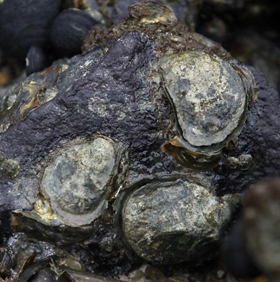2013 Spring Workshop
On April 17, 2013, our Project Team held a mid-project workshop to get additional feedback from key intended users and other stakeholders working on native oyster protection and restoration projects in San Francisco Bay and other areas in CA. The workshop goals were to provide updates on data collected over the past year, share some preliminary results, and to obtain formative feedback on the most important management applications of the new science. We solicited quantitative scores on management questions and products from the 28 end-user participants, as well as qualitative input. End-users represented various regions (esp. central California, but also southern California, Puget Sound) and categories of engagement with oyster restoration (from on-the-ground implementation to planning to funding and permitting). The scores were used to identify top priorities for analysis and interpretation of the data and development of products to disseminate results.
Participant List and Workshop Summary:
The 28 attendees included end-users working on native oyster restoration, research, and permitting; commercial oyster aquaculture; and regional climate change planning. These colleagues had a chance to talk directly with the Project Team about results to date, ask questions, and give substantial input on the format and content of final products. The results of the prioritization by end-users and our adaptation of project plans in response are summarized below, and in the more comprehensive Workshop Summary.
End-users prioritized management questions and six potential products that we could develop to disseminate the new scientific findings for management applications.
Four management questions received the highest scores:
- Which sites currently support healthy and abundant existing oyster populations that are most likely to be sustainable in the long-term?
- Which sites supply a disproportionate amount of larvae to other sites, thereby acting as a source of larvae rather than a sink?
- Which sites are best for success and long-term sustainability of oyster restoration projects?
- Is an oyster restoration project done at site X likely to be successful?
Three products received the highest scores:
- Guidelines (e.g. written documents providing management recommendations)
- Site evaluations (e.g. tables comparing sites in terms of oysters and relevant factors)
- Decision trees (e.g. dichotomous keys or flowcharts providing management guidance)
Thank You!
Overall, the formative feedback (found in the summary) received from these 28 key end-users will be instrumental in guiding the development of management applications from this collaborative science project.
Next Steps:
The Project Team has adapted our planning to focus on the four management questions and three final products listed above. Field and lab studies will continue in 2013. In the lab, our team is focusing on an upcoming combined aerial temperature/low salinity stressor experiment. UC Davis PhD students Jill Bible and Brian Cheng have spawned native oysters from 6 sites in San Francisco Bay in tanks at the Bodega Marine Lab. Jill, Brian, and Kaylee Griffith (a project assistant) are growing the oysters on tiles for 2–3 months. Then they will expose them to low salinity that mimics conditions during spring runoff, followed by aerial temperatures to mimic heat stress during spring low tides. Rearing and feeding baby oysters in the lab takes a lot of work, and we will keep you updated on our progress!
Draft final products will be developed with end-user input in Spring 2014, and a Final Workshop to share results and products will be held in Summer 2014. Please contact Collaboration Lead Marilyn Latta (mlatta@scc.ca.gov) or any of the Project Team memberswith your questions, input, or for more information.




